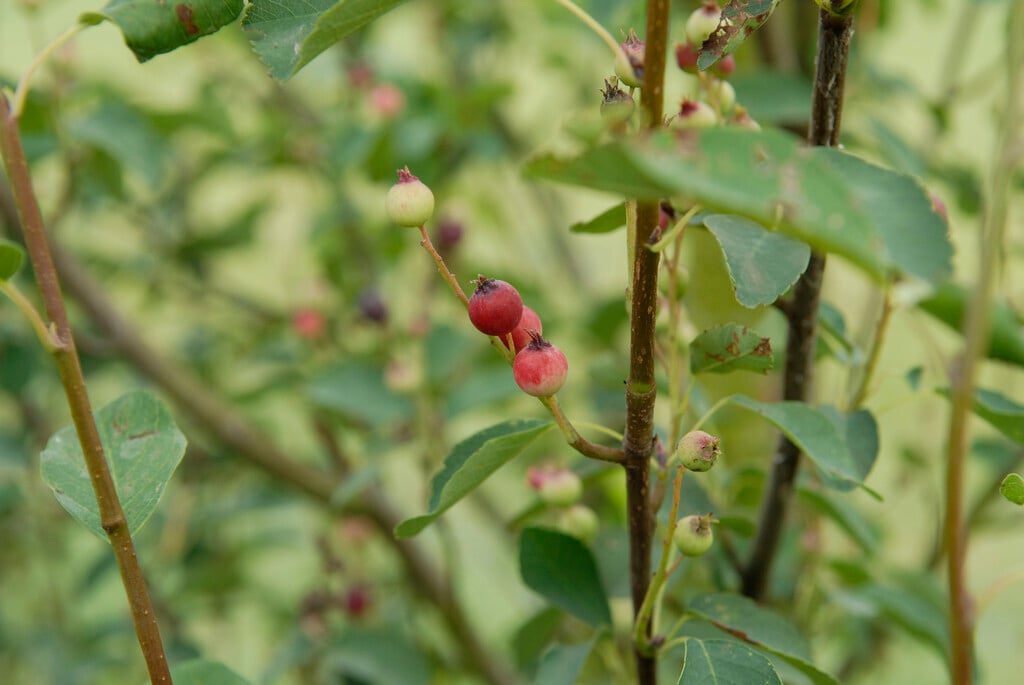Amelanchier alnifolia 'Obelisk'PBR
alder-leaved serviceberry 'Obelisk'
A small, very slender tree or large shrub with upswept branches and bronze young leaves, maturing to green then orange-yellow in autumn. Dense, terminal racemes of pure-white flowers, with green centres, are produced in abundance in mid-spring and followed by edible scarlet fruits, maturing to black
Size
Ultimate height
4–8 metresTime to ultimate height
5–10 yearsUltimate spread
1–1.5 metresGrowing conditions
Moisture
Moist but well–drained, Well–drainedpH
Acid, NeutralColour & scent
| Stem | Flower | Foliage | Fruit | |
| Spring | White | Bronze | ||
|---|---|---|---|---|
| Summer | Green | Purple Red | ||
| Autumn | Orange Yellow | Black | ||
| Winter |
Position
- Full sun
- Partial shade
Aspect
South–facing or West–facing or North–facing or East–facing
Exposure
Exposed or Sheltered Hardiness
H7Botanical details
- Family
- Rosaceae
- Native to GB / Ireland
- No
- Foliage
- Deciduous
- Habit
- Bushy
- Potentially harmful
- The berries are edible, but this tree is usually grown as an ornamental plant rather than to provide a crop of fruit in the UK
- Genus
Amelanchier are small deciduous trees or shrubs with showy white flowers in early spring, red to purple fruits and often good autumn colour
- Name status
Accepted
How to grow
Cultivation
Grow in moist, lime-free, well-drained soil in sun or part shade. The best autumn colour is achieved when grown in full sun. Fruits are enjoyed by birds
Propagation
Propagate by softwood cuttings or semi-ripe cuttings in summer or layering
Suggested planting locations and garden types
- Architectural
- City and courtyard gardens
- Cottage and informal garden
- Wildlife gardens
- Hedging and screens
- Edible fruit
Pruning
Pests
Generally pest-free
Diseases
May be susceptible to fireblight and honey fungus
Get involved
The Royal Horticultural Society is the UK’s leading gardening charity. We aim to enrich everyone’s life through plants, and make the UK a greener and more beautiful place.
